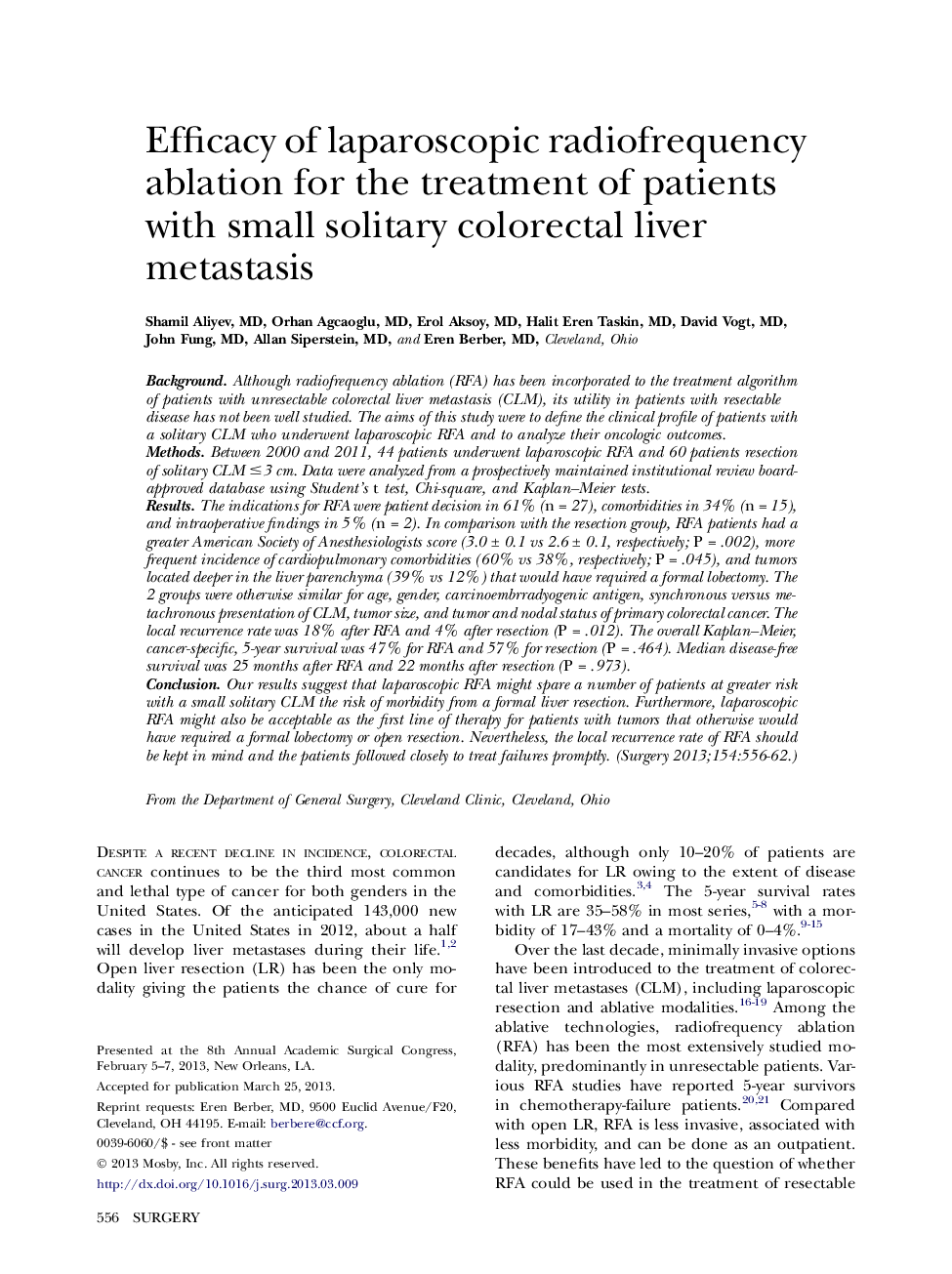| کد مقاله | کد نشریه | سال انتشار | مقاله انگلیسی | نسخه تمام متن |
|---|---|---|---|---|
| 6255229 | 1289228 | 2013 | 7 صفحه PDF | دانلود رایگان |
BackgroundAlthough radiofrequency ablation (RFA) has been incorporated to the treatment algorithm of patients with unresectable colorectal liver metastasis (CLM), its utility in patients with resectable disease has not been well studied. The aims of this study were to define the clinical profile of patients with a solitary CLM who underwent laparoscopic RFA and to analyze their oncologic outcomes.MethodsBetween 2000 and 2011, 44 patients underwent laparoscopic RFA and 60 patients resection of solitary CLM â¤3 cm. Data were analyzed from a prospectively maintained institutional review board-approved database using Student's t test, Chi-square, and Kaplan-Meier tests.ResultsThe indications for RFA were patient decision in 61% (n = 27), comorbidities in 34% (n = 15), and intraoperative findings in 5% (n = 2). In comparison with the resection group, RFA patients had a greater American Society of Anesthesiologists score (3.0 ± 0.1 vs 2.6 ± 0.1, respectively; P = .002), more frequent incidence of cardiopulmonary comorbidities (60% vs 38%, respectively; P = .045), and tumors located deeper in the liver parenchyma (39% vs 12%) that would have required a formal lobectomy. The 2 groups were otherwise similar for age, gender, carcinoembrradyogenic antigen, synchronous versus metachronous presentation of CLM, tumor size, and tumor and nodal status of primary colorectal cancer. The local recurrence rate was 18% after RFA and 4% after resection (P = .012). The overall Kaplan-Meier, cancer-specific, 5-year survival was 47% for RFA and 57% for resection (P = .464). Median disease-free survival was 25 months after RFA and 22 months after resection (P = .973).ConclusionOur results suggest that laparoscopic RFA might spare a number of patients at greater risk with a small solitary CLM the risk of morbidity from a formal liver resection. Furthermore, laparoscopic RFA might also be acceptable as the first line of therapy for patients with tumors that otherwise would have required a formal lobectomy or open resection. Nevertheless, the local recurrence rate of RFA should be kept in mind and the patients followed closely to treat failures promptly.
Journal: Surgery - Volume 154, Issue 3, September 2013, Pages 556-562
